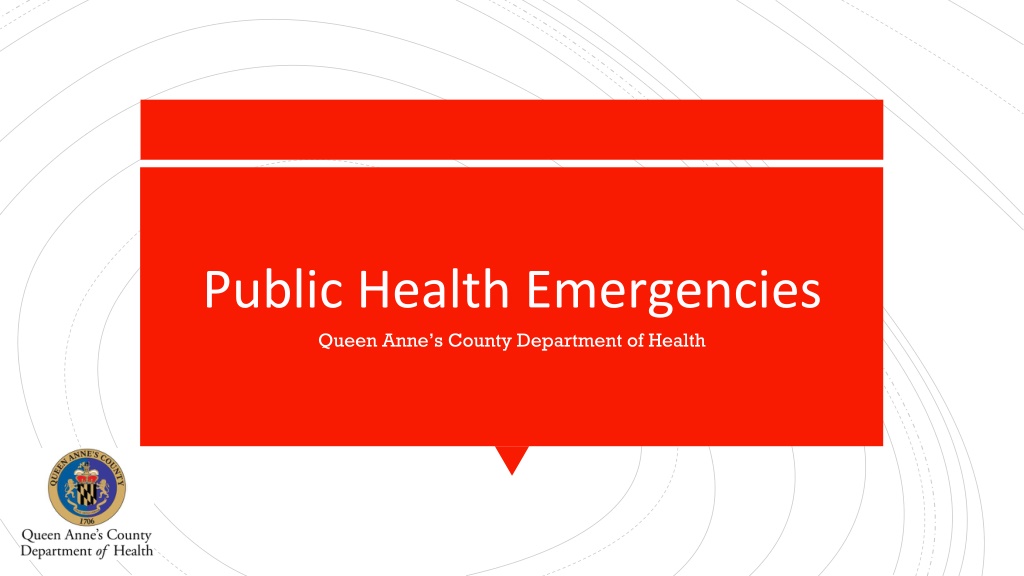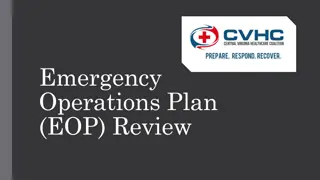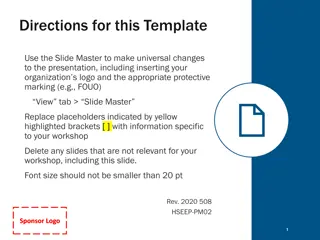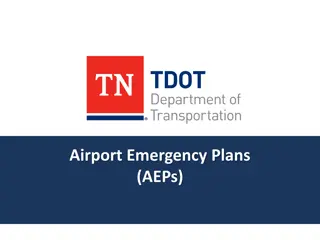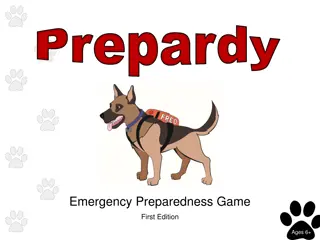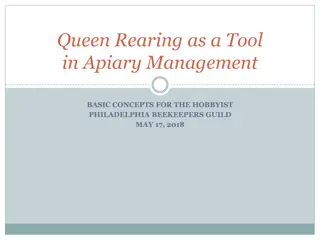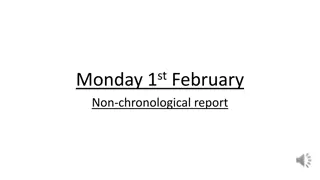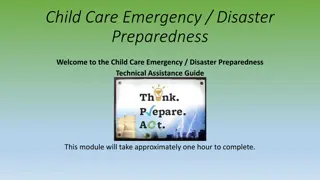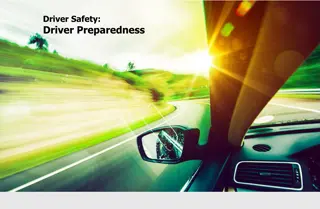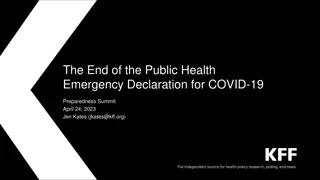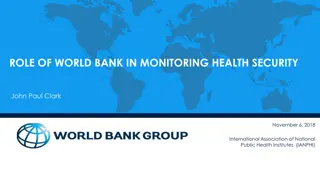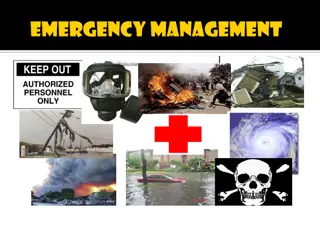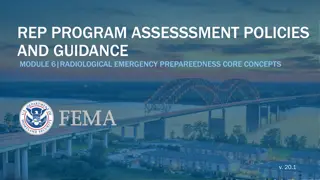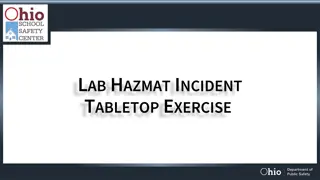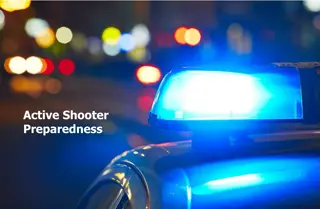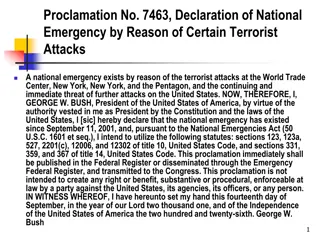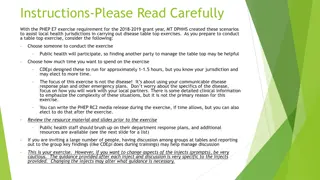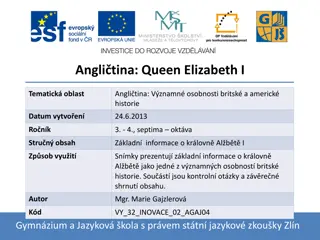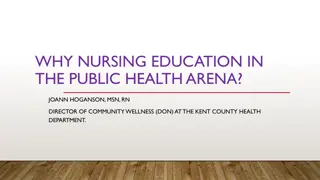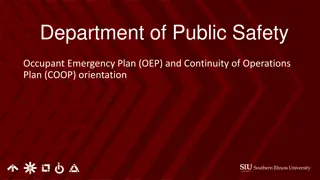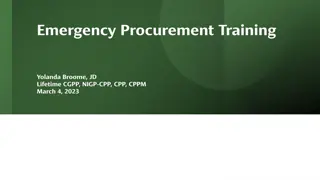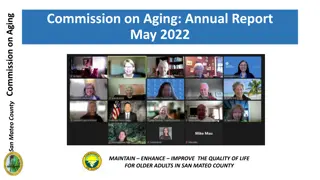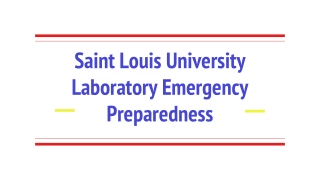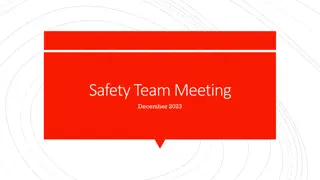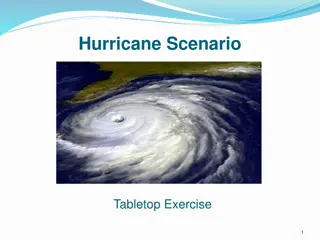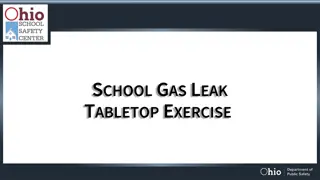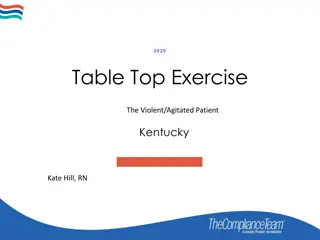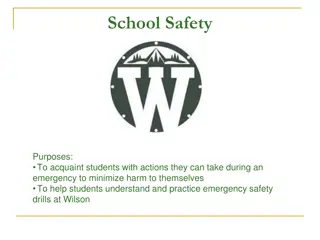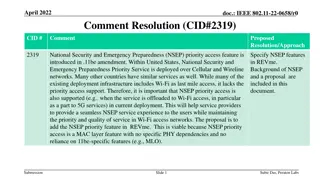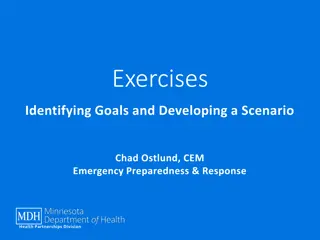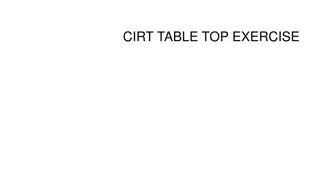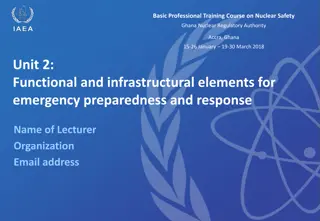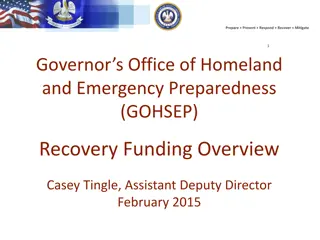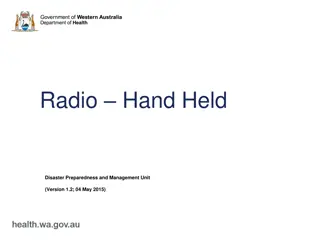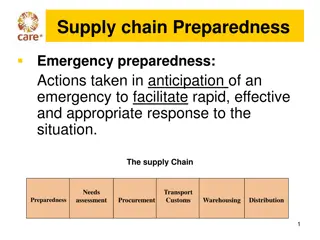Emergency Preparedness in Queen Anne's County Department of Health
The Queen Anne's County Department of Health emphasizes the importance of personal preparedness in handling public health emergencies. They plan and respond to various types of emergencies, including severe weather, pandemics, technological events, human-related events, and more. The department uses the Everbridge alert system for emergency notifications and conducts large-scale responses like mass medication distribution clinics. Understanding the types of emergencies and being prepared as a community are key aspects of their response strategy.
Download Presentation

Please find below an Image/Link to download the presentation.
The content on the website is provided AS IS for your information and personal use only. It may not be sold, licensed, or shared on other websites without obtaining consent from the author. Download presentation by click this link. If you encounter any issues during the download, it is possible that the publisher has removed the file from their server.
E N D
Presentation Transcript
Public Health Emergencies Queen Anne s County Department of Health
Cornerstone of Emergency Preparedness = PERSONAL Preparedness It s Not Luck! Do you have a plan for your Family in the event of an emergency? If your family is prepared, you are better able to respond to an emergency and help the community. Know your risk for the area where you live and work. Make a plan to lessen the impact of those risks. Build a kit to be ready for disasters and emergencies. Visit www.ready.gov for checklists and helpful tips on being prepared for a disaster.
Everbridge is the emergency alert notification system used by Queen Anne s County. County Emergency Notifications To receive alerts about emergencies and other important community events in QAC, visit the Department of Emergency Services website at https://www.qac.org/325/Emergency-Services
What kind of public health emergencies does QACDOH plan for or respond to? Naturally Occurring Events Severe Weather (snow storms, hurricanes, extreme heat), Pandemics or Epidemics/Outbreaks (influenza, measles, smallpox) Types of Emergencies Technological Events Power Failures, Supply Chain Interruptions Human-related Events Bioterrorism (anthrax), Active Shooter, Mass Casualty/Fatality Chemical/Radiological Events Hazardous Materials Spill, Radiological/Nuclear Dispersal
Most emergency responses require only a few people, typically the Health Officer, Directors, and PHEP. Sometimes limited DOH staff are asked to help staff a Shelter. Who All LHD staff may be asked to assist in a large response such as a mass medication distribution at a Point of Dispensing clinic. Responds? Other duties: Call Center, Surveillance, Clerical or Logistical Support.
In an emergency requiring the Health Department medicate the population in a fixed amount of time, we activate large clinics called Points of Dispensing or PODs. There are two types of PODs: Medical Model (like a Flu Clinic) Limited number of people Points of Dispensing Sufficient time to treat/dispense Medical screening conducted Sufficient medical and non-medical personnel Non-medical Model Large numbers of the population affected Limited timeframe to dispense Rapid throughput Head of Household conducts Self-screening for all Requires less medical staff to run
Queen Annes County is a CRI county due to its proximity to Washington, D.C. and is part of the Baltimore Metropolitan Statistical Area (MSA). Cities Readiness Initiative (CRI) CRI started after the Anthrax incidents of 2001 and requires jurisdictions have a plan to rapidly deploy medical countermeasures to the population within 48 hours of notification. We use the non-medical model to dispense the medicine to our 50,000+ citizens!
Where does all the medicine come from to medicate 50,000+ people in 48 hours? The SNS. The Strategic National Stockpile is a national repository, administered by the Assistant Secretary for Preparedness & Response (ASPR), to supplement federal, state, and local public health agencies stockpiles of: Antibiotics Chemical antidotes Vaccines Antitoxins Antivirals Other PPE and equipment SNS supplies can be sent anywhere in the US within 12 hours. Strategic National Stockpile (SNS)
Be Informed. Make a Plan. Build a Kit. Get Involved. Pay attention to emergency alerts and know how to prepared for the hazards that affect our area. What can you do? Where will you go if an emergency affects your home? Prepare for 3 days on your own. Consider becoming a volunteer for public health or your community.
